| July 31, 2008 |  |
MarsDaily Advertising Kit |
| Previous Issues | Jul 30 | Jul 29 | Jul 28 | Jul 25 | Jul 24 |
KODAK Imaging Technology Explores Mars Rochester NY (SPX) Jul 30, 2008
Rochester NY (SPX) Jul 30, 2008As the Mars Reconnaissance Orbiter (MRO) approaches the three-year anniversary of its launch, imaging technology from Eastman Kodak continues to enable the orbiter to explore the red planet as never before. Using images captured by KODAK CCD Image Sensors, the orbiter will soon fulfill one of its primary mission objectives - the collection of a full Martian year of weather data for the ... more Phoenix Lander Working With Sticky Soil  Tucson AZ (SPX) Jul 30, 2008
Tucson AZ (SPX) Jul 30, 2008Scientists and engineers on NASA's Phoenix Mars Mission spent the weekend examining how the icy soil on Mars interacts with the scoop on the lander's robotic arm, while trying different techniques to deliver a sample to one of the instruments. "It has really been a science experiment just learning how to interact with the icy soil on Mars -- how it reacts with the scoop, its stickiness ... more Phoenix Revises Method To Deliver Icy Sample  Tucson AZ (SPX) Jul 29, 2008
Tucson AZ (SPX) Jul 29, 2008NASA's Phoenix Mars Lander's robotic arm will use a revised collection-and-delivery sequence overnight Sunday with the goal of depositing an icy soil sample in the lander's oven. "We are going to modify the process we ran on Sol 60 to acquire another icy sample and attempt to deliver it to TEGA," the Thermal and Evolved-Gas Analyzer, said Barry Goldstein, Phoenix project manager from NASA ... more Can People Live On Mars  Moscow (RIA Novosti) Jul 28, 2008
Moscow (RIA Novosti) Jul 28, 2008The discovery of ice immediately under the surface of Mars is increasing the chances of finding life there. Water is more than the key to the origin of life. Water on Mars raises intriguing questions. Can people build settlements on Mars? Is it suitable for colonization? Can we learn more about our planet by studying the Martian climate? Did Mars go through the same geological processes as ... more Lander Collects Icy Soil But Needs To Work On Delivery  Tucson AZ (SPX) Jul 28, 2008
Tucson AZ (SPX) Jul 28, 2008NASA's Phoenix Mars Lander's robotic arm collected a more than adequate amount of icy soil for baking in one of the lander's ovens but will need to adjust how it delivers samples. Engineers determined the rasping and scraping activity collected a total of 3 cubic centimeters of icy soil, more than enough to fill the tiny oven cell of the Thermal and Evolved-Gas Analyzer, or TEGA. ... more |
gps
 mars-phoenix 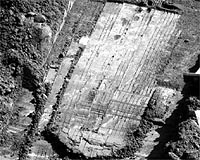 mars-phoenix  |
 Columbus OH (SPX) Jul 25, 2008
Columbus OH (SPX) Jul 25, 2008The same Ohio State University researcher who is helping rovers navigate on Mars is leading a new effort to help humans navigate on the moon. When NASA returns to the moon -- the space agency has set a target date of 2020 to do so -- astronauts won't be able to use a global positioning system (GPS) to find their way around, explained Ron Li, the Lowber B. Strange Designated Professor of ... more NASA's Phoenix Mars Lander Prepares For Next Sample Analysis  Tucson AZ (SPX) Jul 24, 2008
Tucson AZ (SPX) Jul 24, 2008The latest activities of NASA's Phoenix Mars Lander have moved the mission closer to analyzing a sample of material, possibly icy soil, from a hard layer at the bottom of a shallow trench beside the lander. Overnight Tuesday to Wednesday, during Phoenix's 57th Martian day, or sol, since landing, Phoenix used its robotic arm to scrape the top of the hard layer in the trench informally named ... more Phoenix Completes Longest Work Shift  Tucson AZ (SPX) Jul 24, 2008
Tucson AZ (SPX) Jul 24, 2008Phoenix early Tuesday finished its longest work shift of the mission. The lander stayed awake for 33 hours, completing tasks that included rasping and scraping by the robotic arm, in addition to atmosphere observations in coordination with simultaneous observations by NASA's Mars Reconnaissance Orbiter. "Our rasping test yesterday gave us enough confidence that we're now planning for the ... more NASA's Phoenix Mars Lander Works Through the Night  Tucson AZ (SPX) Jul 22, 2008
Tucson AZ (SPX) Jul 22, 2008To coordinate with observations made by an orbiter flying repeatedly overhead, NASA's Phoenix Mars Lander is working a schedule Monday that includes staying awake all night for the first time. Phoenix is using its weather station, stereo camera and conductivity probe to monitor changes in the lower atmosphere and ground surface at the same time NASA's Mars Reconnaissance Orbiter studies ... more |
mars-general
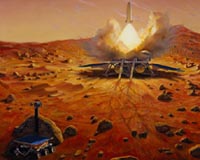 mars-life 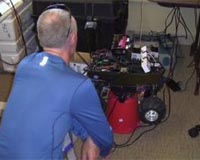 mars-water-science 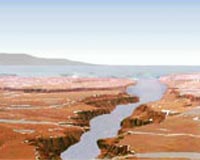 |
 Pasadena CA (SPX) Jul 21, 2008
Pasadena CA (SPX) Jul 21, 2008The team operating NASA's Phoenix Mars Lander plans to tell the lander to do a second, larger test of using a motorized rasp to produce and gather shavings of frozen ground. The planned test is a preparation for putting a similar sample into one of Phoenix's laboratory ovens in coming days. The instrument with the oven, the Thermal and Evolved- Gas Analyzer, called TEGA, will be used ... more NASA Spacecraft Shows Diverse, Wet Environments On Ancient Mars  Washington DC (SPX) Jul 21, 2008
Washington DC (SPX) Jul 21, 2008Two studies based on data from NASA's Mars Reconnaissance Orbiter have revealed that the Red Planet once hosted vast lakes, flowing rivers and a variety of other wet environments that had the potential to support life. One study, published in the July 17 issue of Nature, shows that vast regions of the ancient highlands of Mars, which cover about half the planet, contain clay minerals, which ... more A Workday On Mars Is More Than 9-to-5:40  Dallas TX (SPX) Jul 21, 2008
Dallas TX (SPX) Jul 21, 2008The average day, or "sol," on Mars is 40 minutes longer than our 24-hour day on Earth. UT Dallas Physics Professor John Hoffman has spent more than 50 days on Martian time analyzing soil from the surface of the Red Planet. Hoffman, a member of the UT Dallas William B. Hanson Center for Space Sciences, designed a mass spectrometer system that analyzes gases from soil samples heated in eight ... more Spoting The Differences Between Alaska And Mars  Moffett Field CA (SPX) Jul 18, 2008
Moffett Field CA (SPX) Jul 18, 2008Little did Bucknell University geology professors Craig Kochel and Jeffrey Trop know as they were working in Alaska that they would soon predict one of the most important planetary observations ever made. The pair were in Alaska for an eight day trip in July 2006, studying geological features and the processes that create them. As they studied photographs taken of the surrounding area ... more
|
mars-phoenix
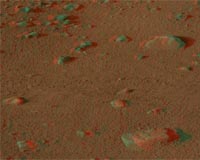 mars-lab 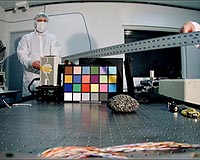 iss  |
| Previous Issues | Jul 30 | Jul 29 | Jul 28 | Jul 25 | Jul 24 |
| The contents herein, unless otherwise known to be public domain, are Copyright 1995-2007 - SpaceDaily. AFP and UPI Wire Stories are copyright Agence France-Presse and United Press International. ESA Portal Reports are copyright European Space Agency. All NASA sourced material is public domain. Additional copyrights may apply in whole or part to other bona fide parties. Advertising does not imply endorsement, agreement or approval of any opinions, statements or information provided by SpaceDaily on any web page published or hosted by SpaceDaily. Privacy statement |